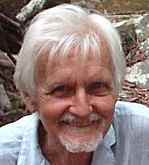President: Andris Berzins (2011)
Prime Minister: Laimdota Straujuma (2014)
Land area: 24,903 sq mi (64,500 sq km); total area: 24,938 sq mi (64,589 sq km)
Population (2014 est.): 2,165,165 (growth rate: –0.62%); birth rate: 9.79/1000; infant mortality rate: 7.91/1000; life expectancy: 73.44
National name: Latvijas Republika
Languages: Latvian (official) 56.3%, Russian 33.8%, other 0.6% (includes Polish, UKRAINIAN , and Belarusian), unspecified 9.4% (2011)
Ethnicity/race: Latvian 61.1%, Russian 26.2%, Belarusian 3.5%, Ukrainian 2.3%, Polish 2.2%, Lithuanian 1.3%, other 3.4% (2013)
Religions: Lutheran 19.6%, Orthodox 15.3%, other Christian 1%, other 0.4%, unspecified 63.7% (2006)
Literacy: 99.8% (2011 est.)
Economic summary: GDP/PPP(2013 est.): $38.87 billion; per capita $19,100. Real growth rate: 4%. Inflation: 0.2%. UNEMPLOYMENT : : 9.8%. Arable land: 17.96%. Agriculture: grain, sugar beets, potatoes, vegetables; beef, pork, milk, eggs; fish. Labor force: 1.022 million; agriculture 8.8%, industry 24%, services 67.2% (2010 est.). Industries: buses, vans, street and railroad cars; synthetic FIBERS , agricultural machinery, fertilizers, washing machines, radios, electronics, pharmaceuticals, processed foods, textiles; note—dependent on imports for energy and raw materials. Natural resources:peat, limestone, dolomite, amber, hydropower, wood, arable land. Exports: $12.67 billion (2013 est.): wood and wood products, machinery and equipment, metals, textiles, foodstuffs. Imports: $15.56 billion (2013 est.): machinery and equipment, chemicals, fuels, vehicles. Major TRADING partners: partners: Germany, Sweden, Lithuania, Estonia, Russia, Finland, Poland, Italy (2011).
Communications: Telephones: main lines in use: 501,000 (2012); mobile cellular: 2.31 million (2012). Broadcast media: several national and regional commercial TV stations are foreign-owned, 2 national TV stations are publicly-owned; system supplemented by privately-owned regional and local TV stations; cable and satellite multi-channel TV services with domestic and foreign broadcasts available; publicly-owned broadcaster operates 4 radio networks with dozens of stations throughout the country; dozens of private broadcasters also operate radio stations (2007). Internet Service Providers (ISPs): 359,604 (2012). Internet users: 1.504 million (2009).
Transportation: Railways: total: 2,239 km (2008). Highways: total: 72,440 km; paved: 14,707 km; unpaved: 57,733 km (2010). Waterways: 300 km perennially navigable. Ports and harbors: Riga, Ventspils. Airports: 42 (2032).
International disputes: Russia demands better Latvian treatment of ethnic Russians in Latvia; boundary demarcated with Latvia and Lithuania; the Latvian parliament has not ratified its 1998 maritime boundary treaty with Lithuania, primarily due to concerns over oil exploration rights; as a member state that forms part of the EU's external border, Latvia has implemented the strict Schengen border rules with Russia.
|






















